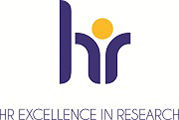Obtaining relevant data
To maximize the value of data gathered or generated in a lab, it has become a necessity and is becoming increasingly frequent, that data be made available in open archives so that it can be reused by others. When utilizing third-party data, the researcher must ensure that all applicable permissions and restrictions of use or sharing are followed.
If you are planning your next project, you should include a search for existing data in your plans. Perhaps there is data that you can use in combination with your data to broaden the analysis basis in your project. The most interesting comparison might be to compare your data with data collected by others. Spending time mapping out what data is available that you can use is therefore something you should make time for. Consider the following methods for finding useful data in open archives, and feel free to seek assistance if necessary: What sources are available for searching, and how should you search? Creating a so-called systematic search in the appropriate sources can be extremely beneficial.
Here are three international sources that we would recommend for searching for research data:
The first two are sources that only provide hits on data material. BASE, on the other hand, contains all types of research material, including data.
Norwegian source: Microdata
UiT has an agreement with Statistics Norway (SSB) to use microdata.no, a service that allows researchers and students to process and analyze anonymized data from Statistics Norway on population, education, income, labor market, and social security.
Various other sources
In UiT's archive for research data, DataverseNO, you can find data that other UiT researchers have archived. However, whatever you find is also available in the three international search engines indicated above.
The Tromsø survey (Tromsøundersøkelsen) is another interesting source. For more than 40 years, this has been Norway's most extensive and most visited demographic survey. All researchers affiliated with institutions with research competency are eligible to apply for access to the Tromsø survey data. You can find more information on how to apply for access to Tromsø survey data on their webpage.
Citation of datasets
If you use other people's data sets in your research, you should refer to them in the reference list in the same manner that you refer to the research literature on which you are based. This applies regardless of the license for reuse.
Normally, only digital versions of archived datasets are available. As a result, references to datasets must always include a link to the resource. The link should be based on persistent identifiers, such as DOI or handle, to ensure that the link does not corrupt. Such persistent identifiers are used by all quality-assured data archives.
There can be many versions of a dataset. It is possible that errors have been corrected, or that the data material has been modified or expanded for other reasons. All of these changes result in a new version of the dataset. As a result, the version number must be provided in the dataset reference. Others will know what version of the dataset your research is based on if they locate the reference in your reference list. A data archive should therefore have version tracking so that anyone who wants to test something can access all previous versions.
An example of a dataset reference is as follows:
Conzett, Philipp, 2022, "Dataverse Community Survey 2022 – Data", https://doi.org/10.18710/UOC8CP, DataverseNO, V1
(Author, Publication Year, "Title", persistent link, Name of Archive, V1)

If you wish to learn more about searching for and citing research data, a webinar on the subject is held every semester. A PowerPoint presentation with additional information is also available on the course page.
Updated: 14.12.2023, updated by: Noortje Haugstvedt


